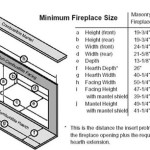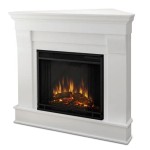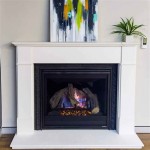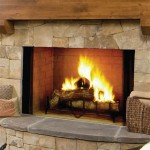How To Clean A Red Brick Fireplace Hearth
The red brick fireplace hearth serves as a focal point in many homes, providing a warm and inviting ambiance. However, its porous surface readily absorbs soot, ash, and grime, leading to a dull and unsightly appearance. Consistent and appropriate cleaning practices are essential to maintaining the aesthetic appeal of the hearth and preventing permanent staining. This article provides a comprehensive guide to effectively cleaning a red brick fireplace hearth.
Understanding the Specific Challenges of Cleaning Brick
Brick, particularly in a fireplace hearth, presents unique cleaning challenges due to its inherent properties. The porous nature of brick allows for deep penetration of soot, ash, and creosote. These substances not only discolor the brick but can also emit unpleasant odors, especially when the fireplace is in use. Furthermore, the rough texture of brick makes it difficult to effectively scrub away stubborn stains. The mortar joints between the bricks, being even more porous, are also susceptible to staining and can crumble if subjected to harsh cleaning methods.
Before commencing any cleaning process, it is crucial to identify the type of stain present. Soot and ash, resulting from incomplete combustion, are the most common culprits. These are typically dry and can be loosened with gentle scrubbing. Creosote, a tar-like substance formed from wood smoke, is more difficult to remove due to its adhesive nature. Water stains, resulting from leaks or condensation, can also cause discoloration and may require specialized cleaning solutions. Understanding the nature of the stain will inform the selection of the most appropriate cleaning method.
Moreover, it is important to consider the age and condition of the brick. Older brick may be more fragile and susceptible to damage from abrasive cleaners or vigorous scrubbing. Efflorescence, a white, powdery substance that appears on the surface of brick, is a common issue, particularly in older structures. This is caused by soluble salts being drawn to the surface by moisture. While efflorescence itself is not harmful, it can detract from the appearance of the brick and should be addressed appropriately.
Essential Materials and Preparatory Steps
Prior to initiating the cleaning process, it is imperative to gather the necessary materials and prepare the surrounding area. This will not only ensure the effectiveness of the cleaning but also protect the hearth and surrounding surfaces from damage. Essential materials include:
- Protective Gear: Rubber gloves to protect the hands from harsh chemicals, and safety glasses to prevent splashes from entering the eyes.
- Cleaning Solutions: A variety of cleaning solutions, ranging from mild dish soap to specialized brick cleaners, should be available. The choice of solution will depend on the severity of the staining and the type of brick.
- Scrub Brushes: A stiff-bristled scrub brush designed for use on masonry surfaces is essential. Avoid using metal brushes, as they can scratch the brick. A smaller brush, such as a toothbrush, is useful for cleaning mortar joints.
- Sponges and Rags: Sponges are useful for applying cleaning solutions and rinsing the brick. Clean rags are needed for wiping away excess moisture and buffing the brick.
- Buckets: Two buckets are required: one for holding the cleaning solution and another for rinsing.
- Drop Cloths or Protective Sheeting: These should be used to protect the surrounding floor and furniture from splashes and spills.
- Vacuum Cleaner with Brush Attachment: A vacuum cleaner is useful for removing loose debris, such as ash and soot, before applying any cleaning solutions.
- Spray Bottle: A spray bottle can be used to apply cleaning solutions to specific areas or to mist the brick with water to prevent it from drying out too quickly.
- Baking Soda or Trisodium Phosphate (TSP): These can be used to create a more abrasive cleaning paste for tackling stubborn stains.
Once the materials are gathered, the preparatory steps include:
- Remove Loose Debris: Use a vacuum cleaner with a brush attachment to thoroughly remove loose ash, soot, and debris from the surface of the hearth and the surrounding area.
- Protect Surroundings: Place drop cloths or protective sheeting around the hearth to protect the floor and furniture from splashes and spills.
- Ventilation: Ensure adequate ventilation by opening windows and doors. Some cleaning solutions can emit strong fumes, so proper ventilation is essential.
- Test Cleaning Solution: Before applying any cleaning solution to the entire hearth, test it on a small, inconspicuous area to ensure it does not damage or discolor the brick.
Step-by-Step Cleaning Methods for Red Brick Hearths
Several methods can be employed to clean a red brick fireplace hearth, ranging from mild solutions to more aggressive treatments. The choice of method will depend on the severity of the staining and the type of brick. It is always advisable to start with the mildest method and gradually increase the intensity as needed.
Mild Cleaning with Soap and Water
For light cleaning and routine maintenance, a simple solution of mild dish soap and warm water can be effective. This method is gentle on the brick and is suitable for removing surface dirt and grime. To implement this method:
- Mix a small amount of mild dish soap with warm water in a bucket.
- Dip a sponge or scrub brush into the soapy water and apply it to the brick surface.
- Gently scrub the brick, paying particular attention to stained areas.
- Rinse the brick thoroughly with clean water, using a sponge or rag.
- Dry the brick with a clean rag.
Using Baking Soda Paste for Stubborn Stains
For more stubborn stains, a paste made from baking soda and water can be used. Baking soda is a mild abrasive that can help to lift stains without damaging the brick. To prepare and use this paste:
- Mix baking soda with water to form a thick paste.
- Apply the paste to the stained areas of the brick.
- Allow the paste to sit for 30-60 minutes.
- Scrub the brick with a stiff-bristled brush.
- Rinse the brick thoroughly with clean water.
- Dry the brick with a clean rag.
Employing Trisodium Phosphate (TSP) for Heavy-Duty Cleaning
For heavily soiled brick or stubborn creosote stains, a stronger cleaning solution such as Trisodium Phosphate (TSP) may be necessary. TSP is a powerful degreaser and cleaner, but it should be used with caution, as it can be harsh on the brick and the environment. It is always crucial to wear protective gear when using TSP.
- Prepare a solution of TSP according to the manufacturer's instructions.
- Apply the TSP solution to the brick surface using a sponge or scrub brush.
- Allow the solution to sit for 15-30 minutes.
- Scrub the brick thoroughly with a stiff-bristled brush.
- Rinse the brick thoroughly with clean water. Several rinses may be necessary to remove all traces of TSP.
- Dry the brick with a clean rag.
Caution: TSP can be harmful if swallowed or inhaled. It can also irritate the skin and eyes. Always wear rubber gloves, safety glasses, and a mask when using TSP. Ensure adequate ventilation and avoid prolonged contact with the solution. Dispose of TSP waste properly, according to local regulations.
Addressing Efflorescence
Efflorescence, the white, powdery deposit that appears on brick surfaces, can be removed using a dry brush or a mild acid wash. For light efflorescence, simply brushing the brick with a stiff-bristled brush may be sufficient. For more stubborn efflorescence, a mild acid wash may be necessary. Muriatic acid, diluted with water, is commonly used for this purpose. However, muriatic acid is a corrosive substance and should be handled with extreme caution.
- Dilute muriatic acid with water according to the manufacturer's instructions. Always add acid to water, not water to acid, to prevent splashing.
- Apply the diluted acid solution to the brick surface using a sponge or scrub brush.
- Allow the solution to sit for a few minutes.
- Scrub the brick with a stiff-bristled brush.
- Rinse the brick thoroughly with clean water. Several rinses may be necessary to remove all traces of acid.
- Dry the brick with a clean rag.
Caution: Muriatic acid is a corrosive substance that can cause severe burns. Always wear rubber gloves, safety glasses, and a mask when using muriatic acid. Ensure adequate ventilation and avoid prolonged contact with the solution. Neutralize any spilled acid with baking soda before rinsing with water. Dispose of acid waste properly, according to local regulations.
Preventative Measures for Maintaining a Clean Hearth
Once the red brick fireplace hearth has been thoroughly cleaned, implementing preventative measures is essential to maintain its appearance and minimize the need for frequent cleaning. The following measures can significantly reduce the accumulation of soot, ash, and grime:
- Regular Cleaning: Regularly vacuum or sweep the hearth to remove loose ash and soot. This will prevent these substances from becoming embedded in the brick.
- Proper Fireplace Maintenance: Ensure the fireplace is properly maintained, including regular chimney cleaning. A clean chimney will improve draft and reduce the amount of soot and creosote produced.
- Use Seasoned Wood: Burn only properly seasoned wood. Seasoned wood burns more efficiently and produces less smoke and creosote.
- Install a Fireplace Screen: A fireplace screen will help to contain sparks and embers, preventing them from landing on the hearth and causing stains.
- Apply a Brick Sealer: Applying a brick sealer can help to protect the brick from staining and make it easier to clean. Choose a sealer that is specifically designed for use on masonry surfaces.
- Promptly Address Spills: Clean up any spills or stains immediately to prevent them from setting in.
By implementing these preventative measures, homeowners can significantly reduce the frequency of deep cleaning and maintain the aesthetic appeal of their red brick fireplace hearth for years to come.
How To Clean A Brick Fireplace

Mortar Wash Brick Fireplace Makeover Dimples And Tangles

How To Clean Fireplace Bricks Simple Practical Beautiful

How To Strip Paint From Brick Fireplace My Alternate Life

How To Clean A Brick Fireplace In 6 Steps Brickanew

How To Clean Brick Fireplaces Mantels Hearths And More My Space

How To Clean A Sooty Fireplace With Household Items Brick House Cleaning Tips

Mortar Wash Brick Fireplace Makeover Dimples And Tangles

Diy Painted Brick Fireplace Makeover On A Budget Before After The Confused Millennial

How To White Wash Your Brick Fireplace Living On Lee
Related Posts








